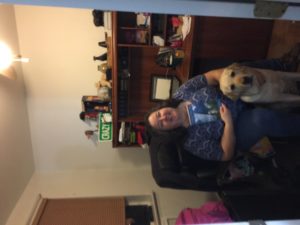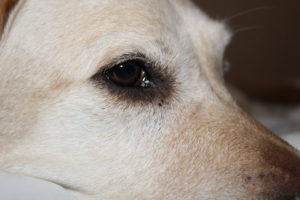
A message from Guide Dog Users of the Empire State (GDUES)
April 29, 2020
It’s International Guide Dog Day, a day set aside to recognize the work that our loving and loyal canine companions do for us every day. Each year International Guide Dog Day is celebrated on the last Wednesday of April.
It takes a village to raise a puppy and help it gain the necessary skills to become a guide dog. Every year staff and volunteers from training organizations around the world breed, raise and train guide dogs and partner them with blind handlers. Our dogs are our heroes, and today is a way to let others know just how much we appreciate them.
Now that we have raised some paws and wagged a few tails to celebrate, we also want to share what it is like to be blind and out in public with a guide dog. During this year of worldwide crisis GDUES wants to share a few tips about how you can help people who are blind maintain social distancing.
When you see a guide dog team, please don’t pet, feed, call or distract the dog. Speak to the handler. It is important for the public to know that guide dogs don’t know about physical distancing. Our dogs are trained to move around obstacles, not to stop six feet away from a door, or in line at the supermarket or pharmacy. It’s important to understand a blind person using a white cane or a guide dog cannot always accurately measure distances or see lines on the floor.
Since we might not hear you come out of the store as we go in, a quick “Hello,” would help. Or, “Hi, you are at the end of the line.: or “Hi, you can Move up a few steps,”. When passing a guide dog handler outside, saying hello will help us keep required physical distancing by hearing where you are in relation to us.
We want to follow the same health and safety precautions as everyone else, however, we might require a little more information than normal. We are all in this together.
The mission of GDUES is to advocate for and support guide dog teams living and working in New York State. Learn more by going to www.gdues.org


 Smashwords has what you want.
Smashwords has what you want.

